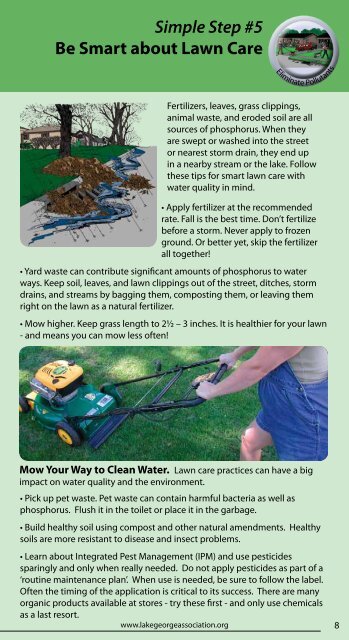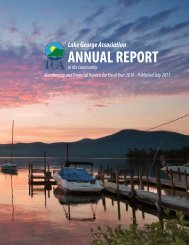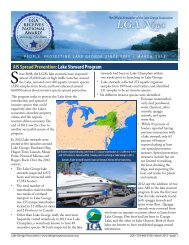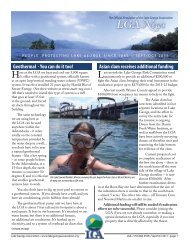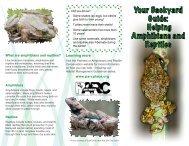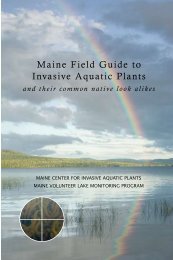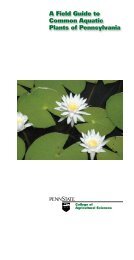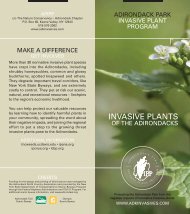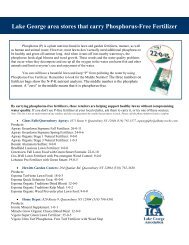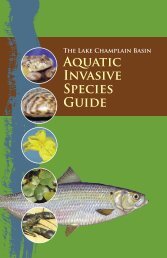"A Homeowner's Guide to Lake-Friendly Living". - Lake George ...
"A Homeowner's Guide to Lake-Friendly Living". - Lake George ...
"A Homeowner's Guide to Lake-Friendly Living". - Lake George ...
You also want an ePaper? Increase the reach of your titles
YUMPU automatically turns print PDFs into web optimized ePapers that Google loves.
Simple Step #5<br />
Be Smart about Lawn Care<br />
Eliminate Pollutants<br />
Fertilizers, leaves, grass clippings,<br />
animal waste, and eroded soil are all<br />
sources of phosphorus. When they<br />
are swept or washed in<strong>to</strong> the street<br />
or nearest s<strong>to</strong>rm drain, they end up<br />
in a nearby stream or the lake. Follow<br />
these tips for smart lawn care with<br />
water quality in mind.<br />
• Apply fertilizer at the recommended<br />
rate. Fall is the best time. Don’t fertilize<br />
before a s<strong>to</strong>rm. Never apply <strong>to</strong> frozen<br />
ground. Or better yet, skip the fertilizer<br />
all <strong>to</strong>gether!<br />
• Yard waste can contribute significant amounts of phosphorus <strong>to</strong> water<br />
ways. Keep soil, leaves, and lawn clippings out of the street, ditches, s<strong>to</strong>rm<br />
drains, and streams by bagging them, composting them, or leaving them<br />
right on the lawn as a natural fertilizer.<br />
• Mow higher. Keep grass length <strong>to</strong> 2½ – 3 inches. It is healthier for your lawn<br />
- and means you can mow less often!<br />
Mow Your Way <strong>to</strong> Clean Water. Lawn care practices can have a big<br />
impact on water quality and the environment.<br />
• Pick up pet waste. Pet waste can contain harmful bacteria as well as<br />
phosphorus. Flush it in the <strong>to</strong>ilet or place it in the garbage.<br />
• Build healthy soil using compost and other natural amendments. Healthy<br />
soils are more resistant <strong>to</strong> disease and insect problems.<br />
• Learn about Integrated Pest Management (IPM) and use pesticides<br />
sparingly and only when really needed. Do not apply pesticides as part of a<br />
‘routine maintenance plan’. When use is needed, be sure <strong>to</strong> follow the label.<br />
Often the timing of the application is critical <strong>to</strong> its success. There are many<br />
organic products available at s<strong>to</strong>res - try these first - and only use chemicals<br />
as a last resort.<br />
www.lakegeorgeassociation.org<br />
8


